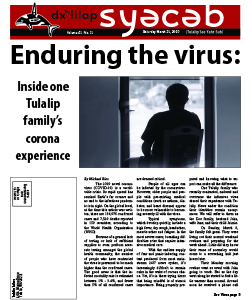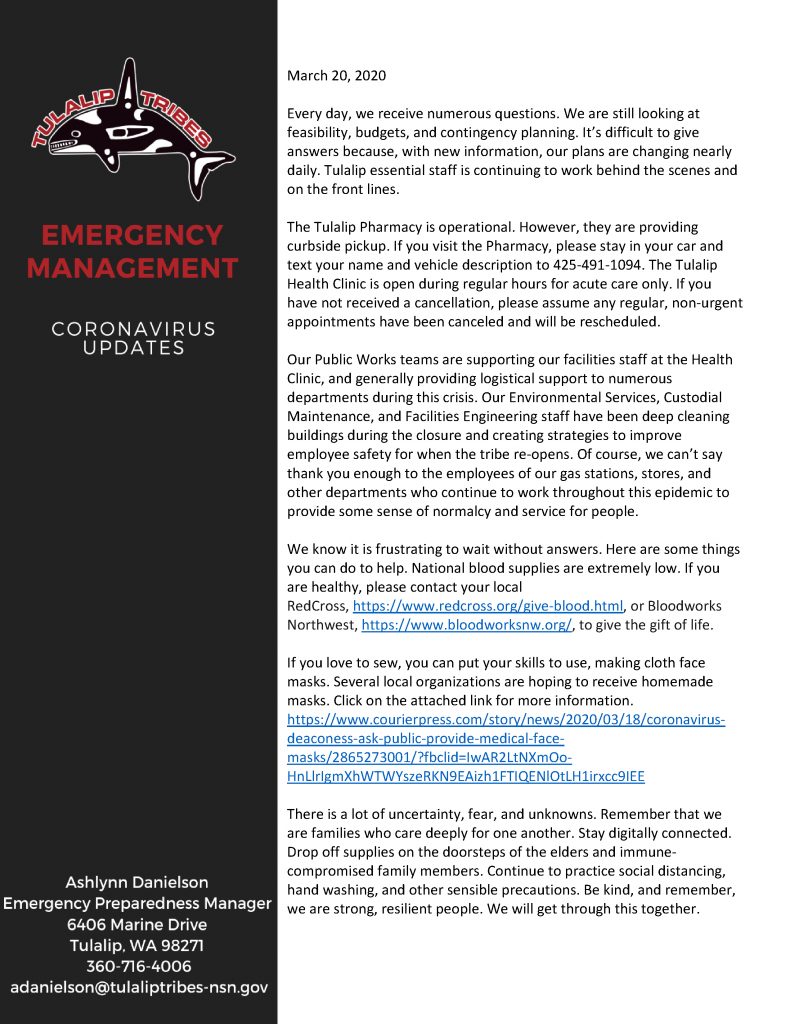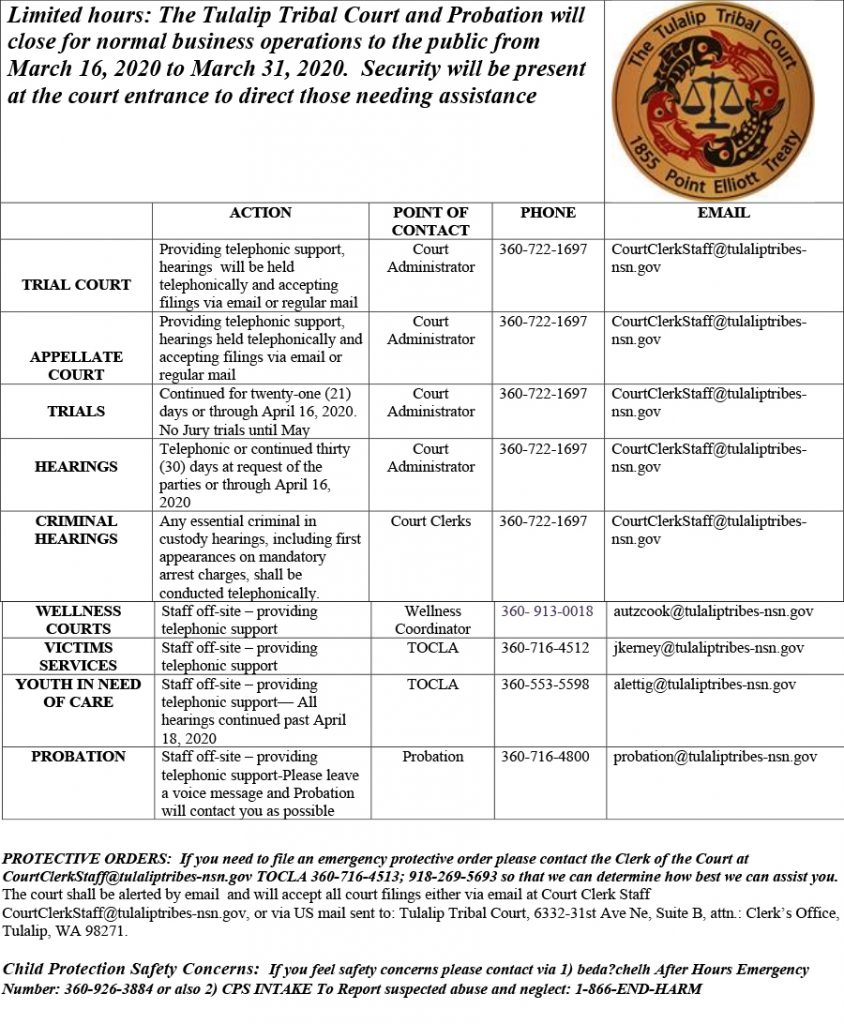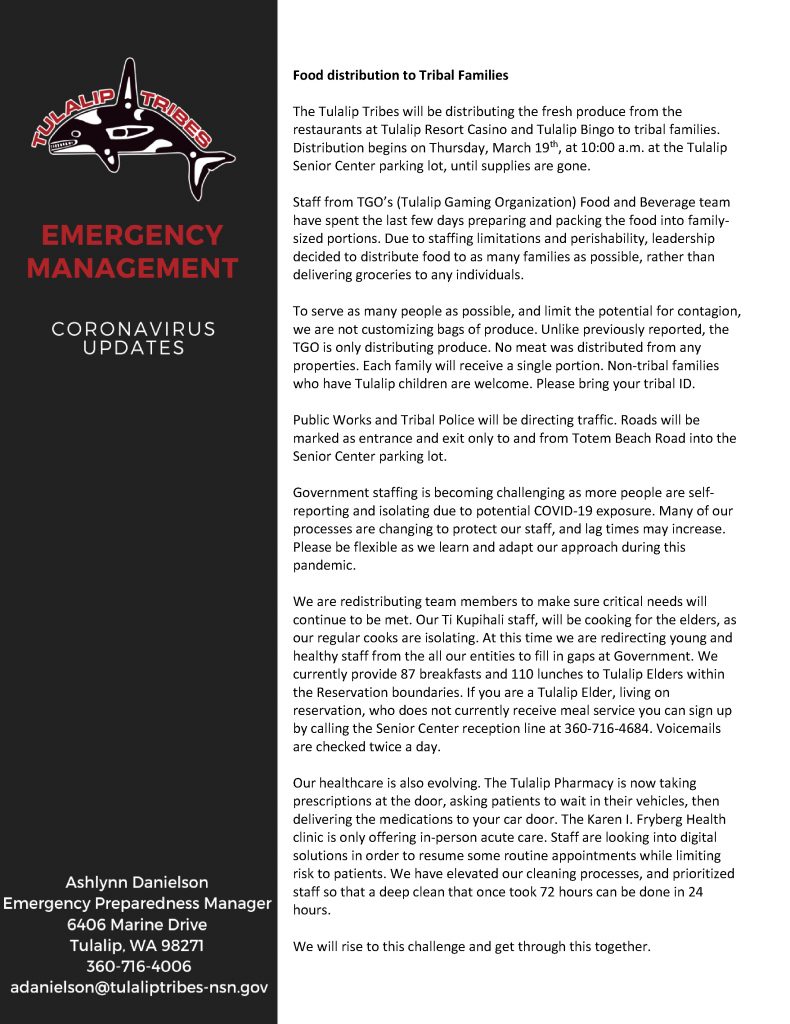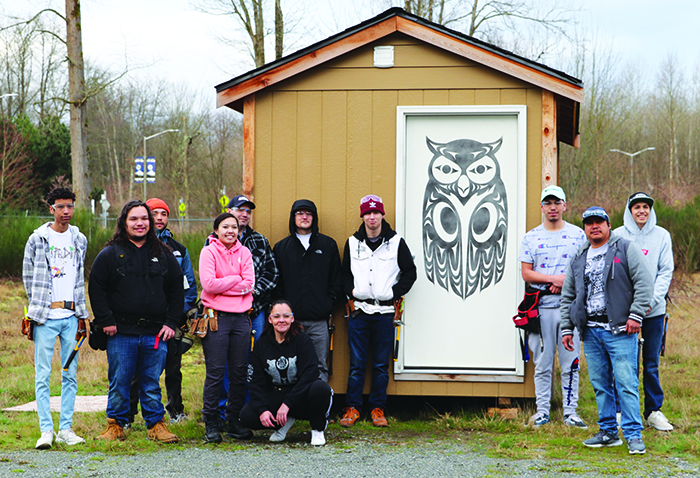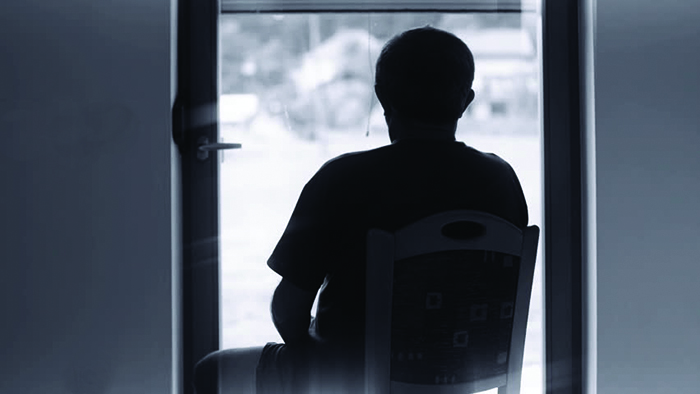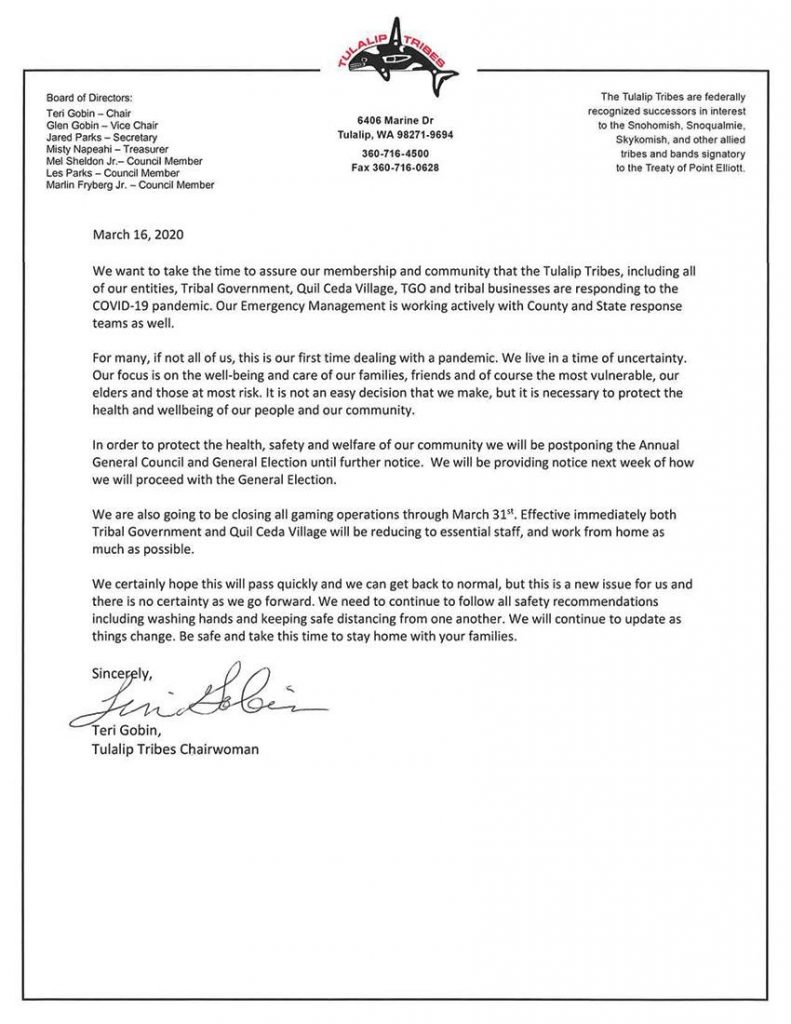
Below are Marysville School District food distribution routes and times, for the Quil Ceda Tulalip area, for delivering food (breakfast and lunch) to students. Matt Remle, Marysville Pilchuck High School Native Liaison, will be on the Quil-Ceda Tulalip route. Matt and fellow volunteers delivered over 3,500 meals on Monday, March 23.
Visit www.msd25.org for more information.
Grab and go meals from the bus locations will continue to be at no cost and for all youth ages 1-18 and those enrolled in the 18-21-year program.
Quil Ceda Tulalip Area
Route: 21
- 10:12 AM MARINE DR NW @ EDWARD BEATTY RD
- 10:18 AM 8208 MARINE DR NW
- 10:19 AM MARINE DR NW @ 83RD PL NW
- 10:28 AM MARINE DR NW @ 115TH ST NW
- 10:33 AM 12015 MARINE DR NW – PORT SUSAN
- 10:38 AM MARINE DR NW @ 126TH ST NW
- 10:46 AM 135TH PL NW @ MARINE DR NW
- 10:50 AM 135TH PL NW @ MARINE DR NW
- 10:51 AM 12702 MARINE DR NW
- 10:52 AM 12610 MARINE DR NW
- 10:57 AM 12518 MARINE DR NW
- 10:58 AM 11710 MARINE DR NW
- 11:02 AM MARINE DR NW @ 115TH ST NW
- 11:08 AM MARINE DR NW @ TULALIP SHORES RD
- 11:14 AM 8226 MARINE DR NW
- 11:18 AM HERMOSA BEACH RD @ SHOEMAKER RD
- 11:25 AM HERMOSA BEACH RD@77TH PL NW
- 11:40 AM 77TH PL NW @ 42ND DR NW
- 11:44 AM 42ND DR NW @ 78TH PL NW
- 11:53 AM WALTER MOSES JR DR @ 28TH DR NW
- 12:01 PM LARRY PRICE LP RD@EZRA HATCH RD
- 12:18 PM 7330 LARRY PRICE LP RD
Route: 56
- 10:10 AM 140TH ST NW @ 76TH AVE NW
- 10:15 AM 140TH ST NW @ 63RD DR NW
- 10:15 AM 140TH ST NW @ 58TH AVE NW
- 10:20 AM 140TH ST NW @ 52ND AVE NW
- 10:21 AM 4500 140TH ST NW
- 10:28 AM 138TH ST NW@ 36TH DR NW
- 10:35 AM 3520 140TH ST NW
- 10:39 AM 140TH ST NW @ 34TH AVE NW
- 10:43 AM 3018 140TH ST NW
- 10:51 AM 12TH AVE NW @ 134TH ST NW
- 10:56 AM 13218 12TH AVE NW
- 11:01 AM 13030 12TH AVE NW
- 11:06 AM 12TH AVE NW @ 130TH ST NW
- 11:15 AM 12TH AVE NW@128TH ST NW
- 11:20 AM 12616 12TH AVE NW
- 11:24 AM 12512 12TH AVE NW
- 11:29 AM 908 124TH PL NW
- 11:33 AM 8TH DR NW @ 125TH PL NW
- 11:42 AM 129TH PL NW @ 8TH DR NW
- 11:46 AM 8TH DR NW @ 131ST ST NW
- 11:54 AM 131ST ST NW @ 10TH AVE NW
Route: 74
- 10:24 AM 22ND DR NE@22ND DR NE
- 10:29 AM 22ND DR NE @ 21ST DR NE
- 10:36 AM 21ST DR NE @ 67TH PL NE
- 10:40 AM 21ST DR NE @ STURGEON DR
- 10:45 AM 65TH ST NE @ 20TH DR NE
- 10:58 AM 20TH DR NE @ 66TH PL NE
- 11:05 AM 19TH DR NE@20TH DR NE
- 11:12 AM 19TH DR NE @ 70TH PL NE
- 11:22 AM 72ND ST NE@19TH AVE NE
- 11:31 AM 6832/6828 19TH AVE NE
- 11:37 AM MARINE DR NE @ 14TH AVE NE
- 11:38 AM 905 MARINE DR NE
- 11:39 AM MARINE DR NE @ 7TH AVE NE
- 11:45 AM MARINE DR NE @ 2ND AVE NE
- 11:50 AM 715 MARINE DR NW
- 11:51 AM 4431 PRIEST POINT DR NW
- 12:00 PM PRIEST POINT DR NW @ GAYS DR
- 12:05 PM MERIDIAN AVE N@PRIEST POINT DR NW
- 12:09 PM MERIDIAN AVE N @ 4425 MERIDIAN AVE N – SNUG HARBOR
- 12:19 PM 4425 MERIDIAN AVE N
- 12:25 PM 928 MARINE DR NE
- 12:26 PM 1118 MARINE DR NE
- 12:26 PM 1718 MARINE DR NE
- 12:27 PM MARINE DR NE @ 23RD AVE NE
Route: 92
- 10:14 AM 5710 MERIDIAN AVE N
- 10:19 AM 5802 MERIDIAN AVE N
- 10:19 AM 5933 MERIDIAN AVE N
- 10:24 AM 60TH ST NW@6TH AVE NW
- 10:25 AM 6TH AVE NW @ 57TH PL NW
- 10:25 AM 6TH AVE NW @ 56TH ST NW
- 10:26 AM 5408 6TH AVE NW
- 10:31 AM 5028 67TH AVE NW
- 10:32 AM 905 MARINE DR NW
- 10:37 AM MARINE DR NW @ 56TH ST NW
- 10:37 AM MARINE DR NW @ 62ND ST NW
- 10:51 AM LLOYD HATCH SR DR @ ALPHONSUS BOB LOOP D
- 11:01 AM TOTEM BEACH RD@70TH ST NW
- 11:18 AM TOTEM BEACH RD @ 28TH AVE NW
- 11:19 AM 6700 TOTEM BEACH RD – FITNESS CLUB
- 11:25 AM MISSION BEACH RD @ MISSIONS HILL RD
- 11:30 AM 5916 MISSION BEACH RD
- 11:34 AM 3213 MISSION BEACH DR
- 11:35 AM 3409 MISSION BEACH DR
- 11:42 AM MISSION BEACH DR @ 39TH DR NW
- 11:44 AM MISSION BEACH DR @ MISSION BEACH HTS RD
- 11:50 AM JOSEPH CHARLES JR LP @ JOSEPH CHARLES LP RD
- 11:56 AM 6518 JOSEPHE CHARLES JR LP
- 12:05 PM 64TH ST NW @ MISSION HILL RD
- 12:08 PM MARINE DR NW @ 12TH AVE NW
- 12:14 PM 905 MARINE DR
- 12:14 PM 600 MARINE DR NW
- 12:15 PM 320 MARINE DR NW
- 12:16 PM 918 MARINE DR NE
- 12:23 PM MARINE DR NE @ 23RD AVE NE
Route: 102
- 10:00 AM 4TH ST @ QUINN AVE
- 10:00 AM 1926 4TH ST
- 10:04 AM 4724 64TH ST NE
- 10:12 AM 1909 3RD ST
- 10:18 AM 2ND ST @ ALDER AVE
- 10:23 AM 2ND ST @ QUINN AVE
- 10:29 AM 2ND ST @ UNION AVE
- 10:40 AM 4922 61ST ST NE
- 10:44 AM 61ST ST NE @ 51ST AVE NE
- 10:50 AM 61ST ST NE @ 52ND AVE NE
- 10:56 AM 61ST ST NE @ 54TH AVE NE
- 11:04 AM 61ST ST NE @ 54TH DR NE
- 11:09 AM 4919 61ST ST NE
- 11:12 AM 1ST ST@COLUMBIA AVE (NE CORNER)
- 11:19 AM 115 CEDAR (STOP ON 2ND 1ST BLDG ON LEFT)
Route:106
- 11:05 AM 27TH AVE NE @ 81ST ST NE
- 11:15 AM MARINE DR NW @ EDWARD BEATTY RD
- 11:19 AM 7911 WATER WORKS RD
- 11:24 AM 3006 TURK DR
- 11:26 AM TURK DR @ 26TH AVE NW
- 11:30 AM 2228 TURK DR
- 11:32 AM TURK DR @ 16TH AVE NW
- 11:32 AM TURK DR@ 82ND ST NW
- 11:32 AM 8325 TURK DR
- 11:33 AM 8727 TURK DR
- 11:38 AM TURK DR @ PERCIVAL RD
- 11:38 AM TURK DR@VAN NESS
- 11:39 AM TURK DR @ PERCIVAL RD
- 11:39 AM TURK DR @ TURK RD
- 11:40 AM TURK DR@ 82ND ST NW
- 11:41 AM TURK DR@21ST AVE NW
- 11:53 AM WATER WORKS RD @ 86TH ST NW
- 11:58 AM 9131 WATER WORKS RD
- 12:01 PM 9530 WATER WORKS RD
- 12:01 PM 9430 WATER WORKS RD
- 12:03 PM ELLISON JAMES DR @ STEVE WILLIAMS DR
- 12:13 PM 36TH AVE NW@BOYS&GIRLS CLUB
- 12:24 PM 27TH AVE NE @ OLD TULALIP RD
- 12:25 PM 27TH AVE NE@SANDRA MADISON LP
- 12:25 PM 27TH AVE NE @ 81ST ST NE
- 12:25 PM 8326 27TH AVE NE
- 12:25 PM 8502 27TH AVE NE
- 12:26 PM 2909 QUILCEDA WY/ 88TH ST NE
